#foraging weeds
Text
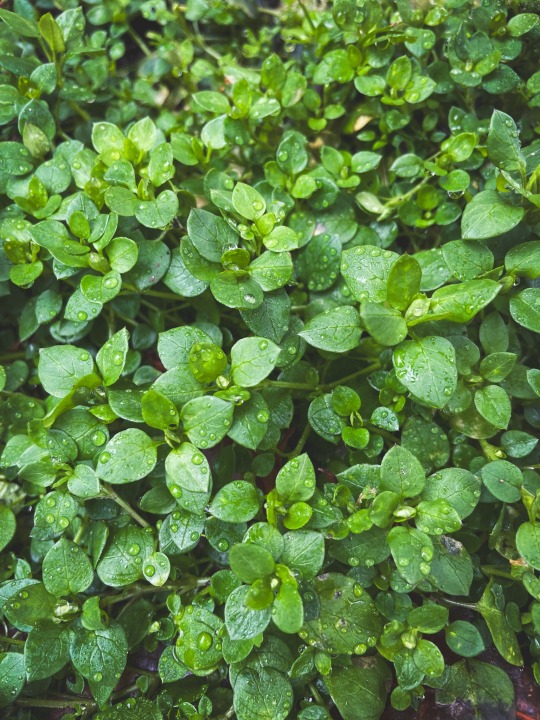
Stellaria media, or chickweed, is often considered a nuisance or just something to throw to the chickens when found outside of its native habitat (Eurasia).
WELL I’m here to tell you that you are missing out on this actually delicious plant. It’s one of my favorite spring greens to eat raw. I pile it on top of sandwiches and use it in salads. It tastes like oak leaf lettuce with a dash of sweetness similar to corn.
Think about this FREE salad ingredient next time you’re looking at a $3 bag of wilty spring mix
#stellaria media#chickweed#plantblr#eat the weeds#foraging#edible plants#you can find it in gardens and farmland most often#or any disturbed soil with some richness going on#i took this photo yesterday morning so she's OUT THERE#at least in the northeastern us#caryophyllaceae#food plants#los plantalones#farmland
231 notes
·
View notes
Text
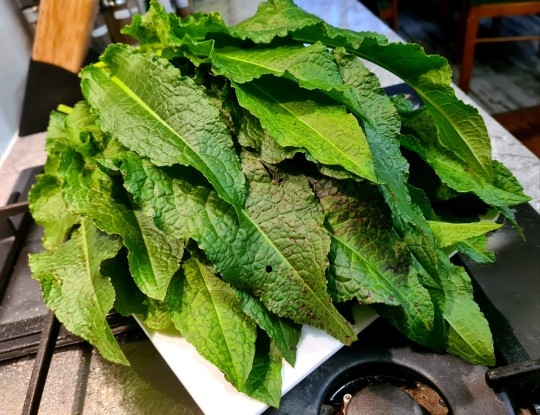




Productive day~🌱
Picked some dock weed at the park - free thief leafs! Cleaned and cut those, pickling the stems as they're bitter and the leaves will be sauted with dinner. Also dried a bunch of our home grown parsley.
#dock weed#pickling#parsley#rumex brownii#hooked dock#swamp dock#Loki cooks#food#herb drying#foraging#herbs#notes:100
132 notes
·
View notes
Text

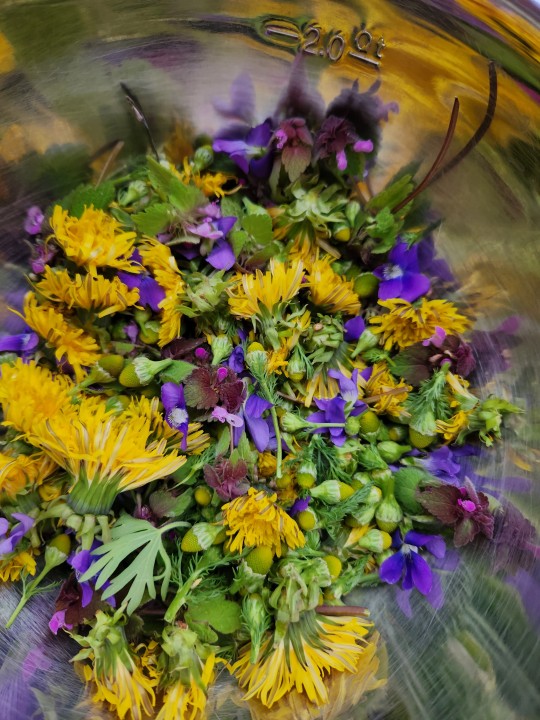

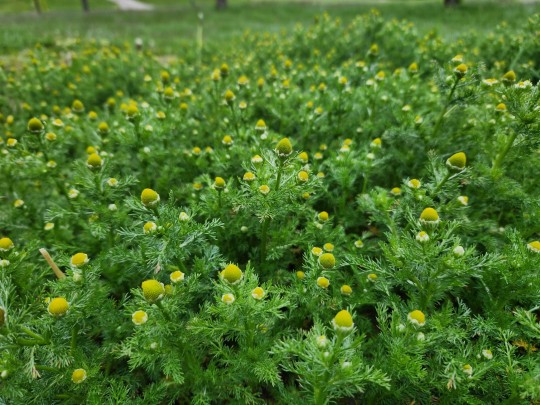
Lots of foraging today.
(flowers: mayweed, dandelion, dead nettle, violet, ground clover, henbit, cranesbill
leaves: chicory, dandelion, plantain, ground clover)
#nature#forage#foraging#eat the weeds#naturecore#solarpunk#edible plants#nature photography#cottagecore#plants#medicinal plants
22 notes
·
View notes
Text
How to Identify Red Deadnettle
Originally posted on my website at https://rebeccalexa.com/how-to-identify-red-deadnettle/
Name: Red Deadnettle (Lamium purpureum)
Range and typical habitat(s): Native to large areas of Europe and Asia. Introduced invasive in United States, New Zealand, and scattered areas of South America

Distinguishing physical characteristics (size, colors, overall shapes, detail shapes): Keep your eyes on lawns, gardens, roadsides, and other sunny areas this spring, and you may very well see the green and purple foliage of red deadnettle.
These heart-shaped leaves with softly serrated edges are covered in fine hairs. Leaves near the top of the slender, square-shaped stem are more of a reddish purple hue, while lower, larger leaves are a medium green. The leaves rarely exceed an inch and a half in length, and are attached to the stem with a slender stalk. Each leaf has palmate veins–several primary veins all starting near the stem–branching off multiple times into a reticulated network of smaller veins.

At the top of the stem, which may be almost a foot long in extraordinary specimens, you may find tiny pinkish purple trumpet-shaped flowers. A close look reveals one large petal at the top, two smaller ones at the bottom, and sometimes a few tiny ones in the space in between. While flowers are easily in evidence this time of year, red deadnettle may flower in other seasons if conditions are favorable. As it is an annual, it will die back in fall, but new generations are quick to germinate before winter sets in. For those wishing to remove it from their gardens, the shallow root systems mean that it is easy to pull up, especially in wet soil.
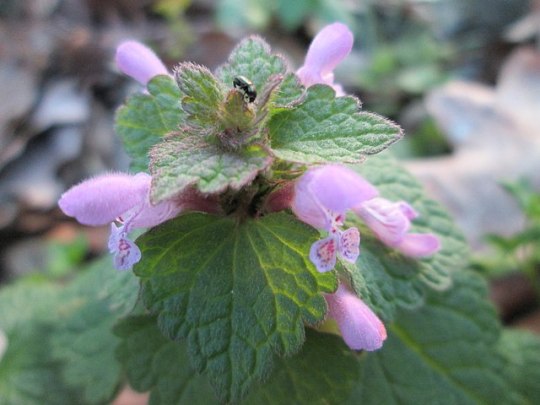
Red deadnettle is a member of the mint family (Lamiaceae). While it resembles a very tiny stinging nettle (Urtica spp.), its tiny hairs do not cause irritation, hence being described as “dead”. Other common names for this plant include purple deadnettle and purple archangel.
Other organisms it could be confused with and how to tell the difference: Purple henbit (Lamium amplexicale) is the most common lookalike for red deadnettle. They inhabit the same habitat types and are of similar size and colors. Upon closer inspection, the leaves are a good way to tell the difference. Henbit leaves are more rounded in shape with a scalloped, rather than serrated, edge. In fact, they almost give the impression of one large round leaf surrounding the square stem, especially near the top. The upper leaves have no stalks, while lower leaves have short stalks. While henbit has similar flowers, they are longer than those of deadnettle.

Note how henbit’s leaves and flowers are shaped and arranged differently than deadnettle’s.
Ground ivy (Glechoma hederacea) is similar to purple henbit, but the rounded, scalloped leaves are often a darker green on a green to dark red stem. Also, all the leaves have a small stem. It is easily differentiated from deadnettle by its flowers, which although being of a similar shaped are blue to purple in color. Ground ivy is also more shade-tolerant than deadnettle. As with the others, it is a European plant that has become invasive in North America.
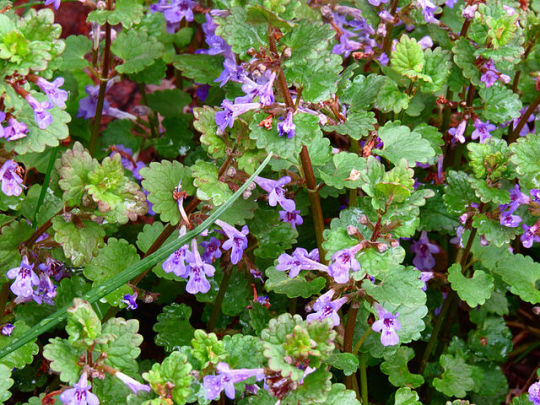
Yellow archangel (Lamium galeobdolon) is yet another European wildflower that has taken root in North America and New Zealand, and to a lesser degree in South America. Its size is the most obvious way to differentiate it from red deadnettle and the rest; it grows on a single stalk that may be over thirty inches tall. The serrated, oval leaves and the yellow flowers are also larger than those of deadnettle, and there is no reddish tint to the foliage.
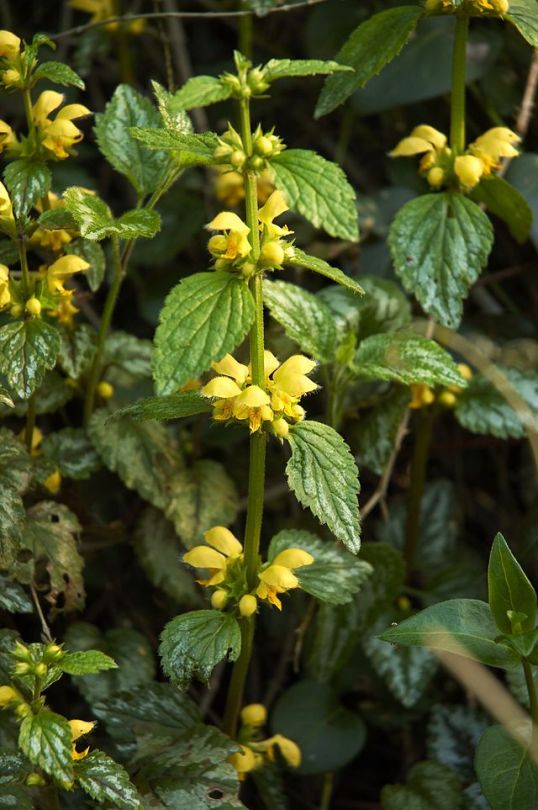
The stinging nettles (Urtica spp.) can similarly be differentiated from red dead nettle by size. Particularly tall specimens may reach seven feet high, and the green, heart-shaped leaves can be up to six inches long. The leave margins are more sharply serrated and the end is pointier. And, as the name suggests, the leaves and stems have hairs that inject irritating chemicals into the skin.
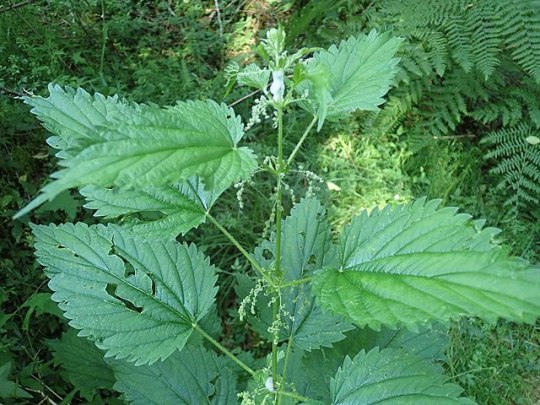
Anything else worth mentioning? Red deadnettle is a beginner-friendly edible plant for foraging. Henbit is the plant it’s most likely to be confused with, and it is also edible. People most commonly eat the young leaves and flowers at the top of the plant; they may be eaten raw or cooked. Because it is an invasive species, you are encouraged to pick the whole plant before it goes to seed, eat what you want of it, and compost the rest.
Further Reading:
Red Dead-Nettle
Lawn and Turfgrass Weeds: Dead Nettle
Dead Nettle, Henbit, and Ground Ivy – Three Look-Alike Weeds
Dead Nettle, an Overlooked yet Valuable Wild Edible
Did you enjoy this post? Consider taking one of my online foraging and natural history classes or hiring me for a guided nature tour, checking out my other articles, or picking up a paperback or ebook I’ve written! You can even buy me a coffee here!
#red deadnettle#red dead nettle#mint family#edible wild plants#edible plants#foraging#herbs#herbalism#nettles#botany#plants#wild foods#weeds#invasive species#red henbit#yellow archangel#ground ivy#stinging nettle
88 notes
·
View notes
Photo

First 15 of my series of linocuts of native plants in Alberta are now available for order in my shop! Letter Mail Option // Rigid Mailer Option
Each print is drawn, carved, and printed by myself on handmade paper, also made by me!
You can find some quick facts about each plant in my highlighted stories on insta if you wish! From top left in the first image we have: Pineapple weed, Jacob's ladder, Pussytoes, Goldenrod, Yarrow, Purple Coneflower, Mountain Hollyhock, Gumweed, Red Paintbrush, Prickly Rose, Rocky Mountain Bee Plant, Blue Beardtongue, aaaand Columbines!
Let me know which ones your favourite so far- and which native plant I should carve next! (prairie smoke and strawberry spinach are already in the works!)
#botanical art#floral art#floral prints#alberta native plants#black and white#flowers#plants#cottagecore#forager art#foraging#medicinal herbs#witchy art#garden witch#kitchen witch#edible plants#natural dye#pineapple weed#wild chamomile#jacobs ladder#pussytoes#golden rod#yarrow#coneflower#echinacea#hollyhock#mallow#gumweed#paintbrush#rose#prickly rose
61 notes
·
View notes
Text
Pickleweed

Find:marshs, bays with ocean water.
Description:Each plant consists of round, branching stems that are divided by joints into individual segments. The leaves and flowers are so tiny that you will probably never notice them.
Edible parts and uses:plant is edible raw or when cooked.top-half of stems can be harvested, allowing the bottom to grow a new shoot.plant is best when gathered before flowering.
Precautions:no side effects.
#pickleweed#weeds#Canada#mb#Northern#zone#wetlands#foraging#ocean#sea#waters#plants#leaves#flowers#shoots#edible plants#homesteading#cottagecore#herbs#forest#foraging weeds#salt water#shortlines#cold#ph#raw or cooked#gardening#north america#summer#spring
130 notes
·
View notes
Text

Wild Garlic Gnocchi (Vegan)
#vegan#diy#gnocchi#pasta#italian cuisine#wild garlic#wild foods#wild weeds#invasivore#potato#if you do decide on making any of today's recipes be sure you forage/source sustainably or not at all#Also be 150% sure in your identifications 💕
68 notes
·
View notes
Text
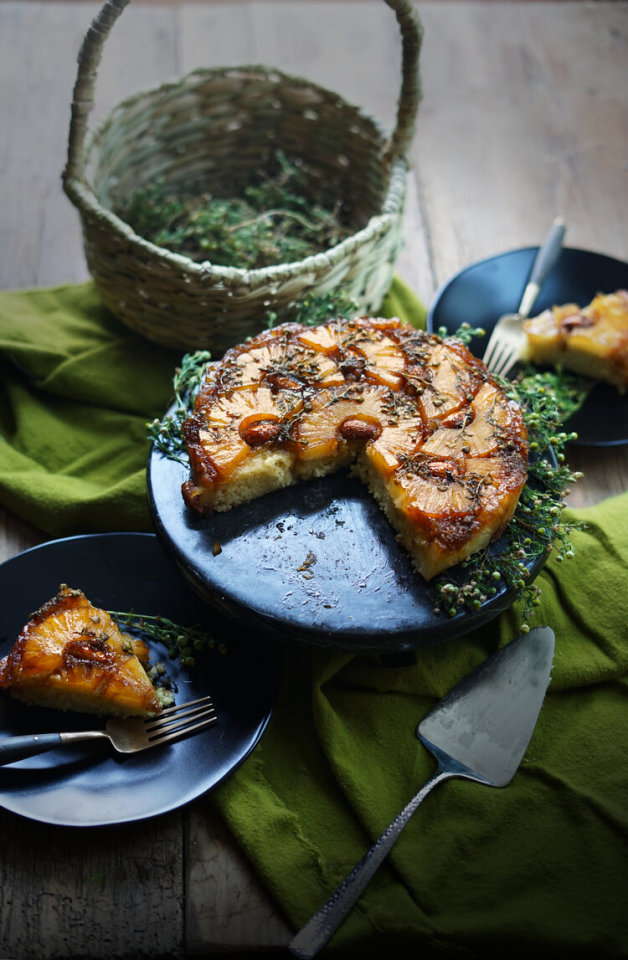
Pineapple weed + Pineapple Upside-down Cake
#recipes#spring recipes#baking recipes#foraged recipes#cakes#upside down cake#pineapple weed#pineapples
10 notes
·
View notes
Text
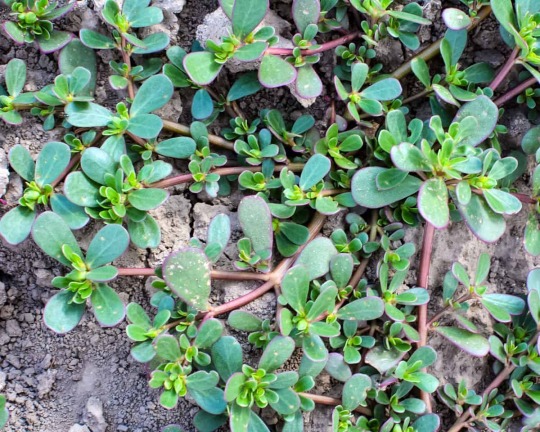


Purslane blew my mind
I noticed a small succulent looking plant growing out of one of my cactus and like any gardener does, classified it as 'other' or a weed in my specific type of plant! Untill I googled about what it could be, and found out that purslane has many vitamins, minerals and antioxidants that make it recognized as a superfood in many parts of the world. Rich in vitamin C, A, beta - carotene, omega 3 - fatty acids, calcium, folate, iron, magnesium, and potassium! Excellent for tossing into salads. It's recommended to either cook lightly, leave it raw or cook the hell of out them to avoid an okra - like gooey texture that can generally be unpleasant. The only thing I'd say to watch out for when consuming purslane is due to it's oxalate content, especially the seeds, it may not be the most suitable for those who are prone to kidney stones. And the plant that may be mistaken for it, poison spurge, will leak a white sap when broken apart!
Purslane completely changed my view on the things the grow around me, in my garden and throughout the neighborhood. It has inspired me to really consider what is a 'weed' and what is actually just an unidentified source of healing, or nourishment.
Bonus: tiny plant, big flower for some species 🌸 (photos provided by Google)
#cottageblr#plantblr#plant parent#plants#gardening#houseplants#dark cottagecore#house plants#indoor plants#weeds#medicinal plants#medicinal herbs#house plant#purslane#wild foraging#foraging#neighborhood plants#neighborhood foraging#succulent#medicinal succulent#foragecore#plant life#plant#photos from google
7 notes
·
View notes
Text
Nettle and Green Onion Rarebit (Vegetarian)

After a few hours spent gardening, sowing, planting, weeding and tilling, how satisfying to return in the kitchen with freshly dug go, and freshly snipped (very carefully, with gloves!) nettle. These Nettle and Green Onion Rarebit, inspired from a recipe in this month's Simple Things, make the harvest all the more delicious! Happy Thursday!
Ingredients (makes 4 slices):
a large Green Onion
2 tablespoons unsalted butter
2 tablespoons plain flour
1 cup semi-skimmed milk
a pinch of fleur de sel or sea salt flakes and freshly cracked black pepper
nutmeg
Mature English Cheddar
4 small slices White Bloomer Bread
1 tablespoon unsalted butter
1 cup freshly picked nettles (wearing gloves), leaves removed from the stalks and thoroughly washed under cold water (wearing rubber gloves!)
Preheat oven to 250°C/480°F.
Finely chop Green Onion.
Melt butter in a medium saucepan over a medium flame. Once butter is just foaming, add chopped Green Onion, and cook, a couple of minutes.
Sprinkle in the flour. Give a good stir, and cook out, 1 minute.
Remove from the heat, and gradually stir in the milk, to prevent lumps, so the mixture is smooth and loose. Return over medium heat, and cook, stirring constantly until the sauce thickens. Once the béchamel thickens, season with fleur de sel and black pepper. Grate in about 1/4 teaspoon nutmeg. Then, grate in 1/3 cup Mature English Cheddar. Give a good stir until melted. Remove from the heat.
Place White Bloomer Bread slices onto a pizza pan, and place in the middle of the hot oven. Toast, at 250°C/480°F, 4 minutes.
Melt butter in a small frying pan over medium-high heat. Once the butter is just foaming, add the nettle leaves, and sauté, a couple of minutes until wilted. Transfer to a chopping board, and chop finely. Stir nettle leaves into the cheesy béchamel.
Flip White Bloomer Bread slices on their other side, and spoon cheesy nettle and green onion béchamel onto each slice. Grate a little more Cheddar on top and return to the hot oven. Bake, at 250°C/480°F, 3 to 4 minutes, until bubbly.
Sprinkle Nettle and Green Onion Rarebit with chopped green part of the Green Onion, and serve immediately, with a glass of chilled white wine, like Chardonnay or Sauvignon Blanc.
#Recipe#Food#Nettle and Green Onion Rarebit#Nettle and Green Onion Rarebit recipe#Rarebit#Rarebit recipe#Bread#White Bloomer Bread#Béchamel#Béchamel Sauce#Butter#Flour#Milk#Nutmeg#Fleur de Sel#Black Pepper#Black Peppercorns#Cheddar#Mature English Cheddar#Nettles#Garden Nettles#Green Onion#Garden Green Onion#Garden Vegetables#Garden Weeds#Foraging#Growing Gardening and Foraging#Thrifty#Thrifty recipe#Thrify Thursday
2 notes
·
View notes
Text
4/20
It's April 20th, and instead of smoking weed, I chopped up weed roots and roasted them to make into coffee
By Weed Roots, I mean dandelions, that I pulled from my yard.
And yes, it tastes good.
2 notes
·
View notes
Text

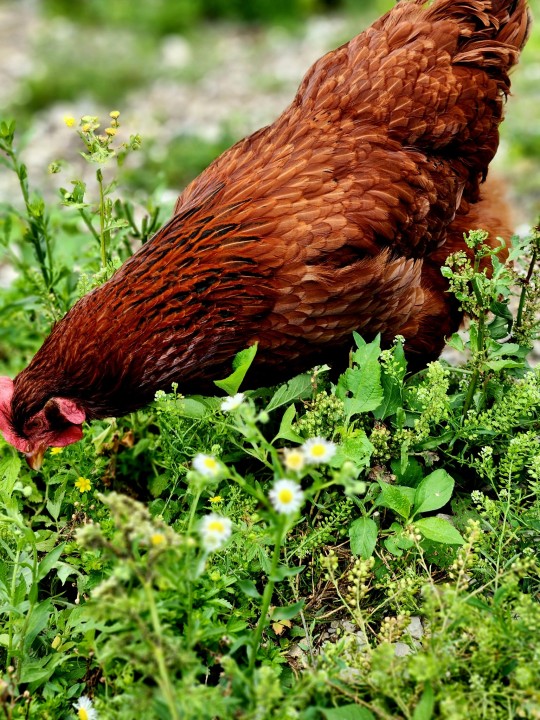

Meet 'Angry Red', our older Rhode Island Red hen. We may have a rooster but she's who's in charge! One of the few originals left.
While not everyone is in a position to take on chickens, this is a friendly PSA on how easy it really is- especially if you raise or train them to forage. Currently in progress to convert ours to 100% greens and leave commercial feeds behind for good!
#chickens#solarpunk#solarpunk aesthetic week#homesteading#farmcore#nature#photography#cottagecore#naturecore#animals#gardening#nature aesthetic#eat the weeds#forage#foraging
21 notes
·
View notes
Text
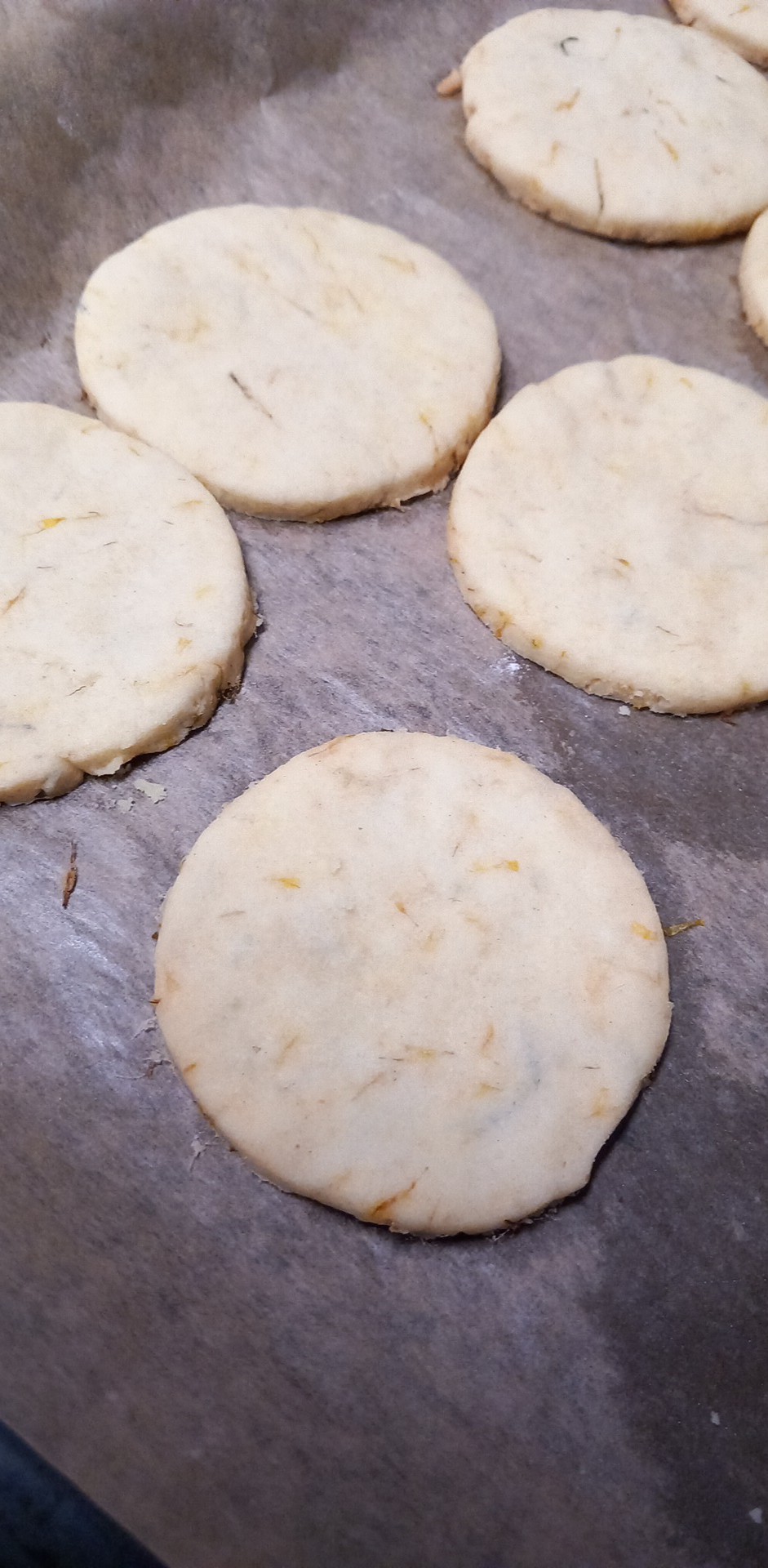

I made dandelion shortbread cookies that turned out to be AMAZING!! They have that honey aroma of dandelions and taste just like regular cookies. I am also making what my family calls herb-honey which is dandelion syrup I just call it dandelion honey tho.
Recipe for cookies: https://susancooksvegan.com/dandelion-vegan-shortbread-cookies/
10 notes
·
View notes
Text
Species You Didn’t Know Weren’t Native to North America
There are some species found here in North America that are so common that many people just assume they’re part of the native menagerie. They’re naturalized, which means they’re non-native but have managed to establish reproducing populations here. Some may also be considered invasive, in that they aggressively compete with native species and may even displace them in some places.
I know some of you readers will already be familiar with the fact that the following species aren’t native here. But I bet there’ll be surprises for the rest of you! Let’s see who our not-actually-natives are.

Ring-necked Pheasant (Phasianus colchicus)
Hunters across the continent have long hunted pheasants for the table. First introduced in 1773–exactly 250 years ago–they have since made themselves at home in fields and meadows. While the largest populations can be found in the Midwest, especially the Great Plains states, they can be found throughout the United States, with additional scattered populations in southern Canada and Mexico.
While sometimes assumed to have integrated into their introduced habitats, pheasants actually wreak havoc on native game birds like quail and grouse. They compete for suitable food and nest sites, and may also practice nest parasitism, laying their eggs in other birds’ nests. This competition has led to decreases in native bird populations, as has the spreading of diseases that the pheasants tolerate, but which decimate other species. Pheasants will even attack and kill other birds.
So what other species made the list? Keep reading to find out!
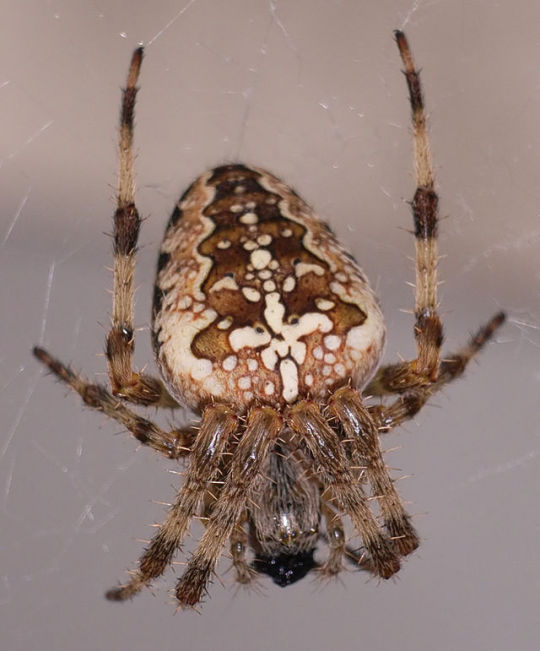
Cross Orb Weaver (Araneus diadematus)
Fall is cross orb weaver time, and I run into these spiders constantly–sometimes literally, depending on how inconveniently their webs are placed! By that time of year, they’ve grown large enough to be noticeable, and their orange and brown coloration looks rather festive.
While I haven’t been able to find any indication that these spiders have a deleterious effect on their introduced ecosystems, they likely put at least some pressure on local invertebrate populations, whether as predators or competitors for prey species. This may become more pronounced as continued overuse of pesticides and habitat loss contribute to the invertebrate apocalypse.
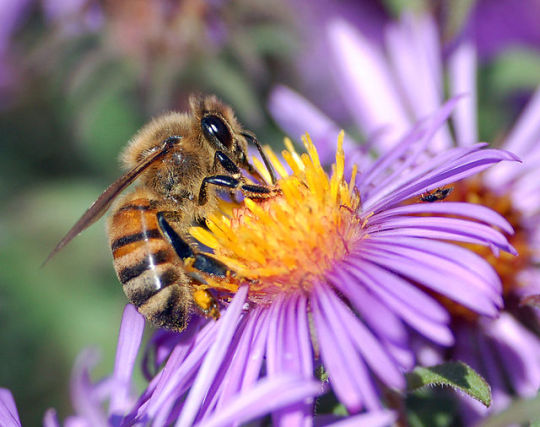
Honey Bee (Apis mellifera)
“Save the bees!” has been an increasingly common headline since Colony Collapse Disorder first became widely known among the general public almost twenty years ago. What the articles rarely mention is that the honey bee is actually a domesticated insect that originated from wild stock in Europe. In fact, the true wild honey bee may be close to extinction, another victim of its domesticated descendants.
In fact, honey bees cause the decline of wild bee species wherever they are introduced. Not only do they compete with wild bees for food and nest sites, but they also spread diseases and parasites to these other species, some of which have become quite scarce. Moreover, honey bees are less effective at pollinating native plants outside their own range, and these species are at risk of extinction if their native pollinators are out-competed.

Another invertebrate beloved of gardeners here, the earthworms actually consist of a mix of both native and non-native species. Unfortunately, many native earthworms went extinct during the last Ice Age, so if your area has a recent glacial history it’s likely that the worms in your garden are invasive. (That does include the red wigglers (Eisenia fetida) commonly used for vermicomposting.)
What damage can a bunch of worms do? Plenty, as it turns out. They speed up decay and mix up nutrients in the soil in ways that many North American ecosystems aren’t used to. This changes physical characteristics of the soil like pH, texture, and density, as well as distribution of nutrients. Some young plants may not be able to reach nutrients that worms have moved deeper underground. So while you may thank earthworms for aerating the soil in your garden, they’re more of a problem for a lot of native ecosystems here.

umbleweed (various species)
“Drifting along with the tumbling tumbleweeds,” sang the Sons of the Pioneers in 1934, though tumbleweeds have been associated with the American West for much longer. Several species of plant dry out, snap off the root system, and roll along the ground spreading the mature seeds. The best-known species is the Eurasian Kali tragus, though there are other species that have been introduced here.
Because these plants take up a lot of physical space, they can crowd out native plants, especially those that are not shade-tolerant. Their seed distribution method means that one plant can spread its descendants many miles from where it originated. Moreover, the masses of dead, dry tumbleweeds can build up and become wildfire fuel.

Red Clover (Trifolium pratense) and White Clover (Trifolium repens)
These two plants are so ubiquitous that it’s easy to assume they’ve always been here. White clover is especially common in lawns, and red clover will pop up in just about any disturbed sunny spot. Both are native to Europe and Asia, and red clover additionally may be found in North Africa. However, both species have been widely introduced elsewhere.
While neither is considered particularly invasive, they can take over large areas of disturbed land. They are deliberately sown for cover crops and livestock forage, so they’re not likely to go away any time soon.
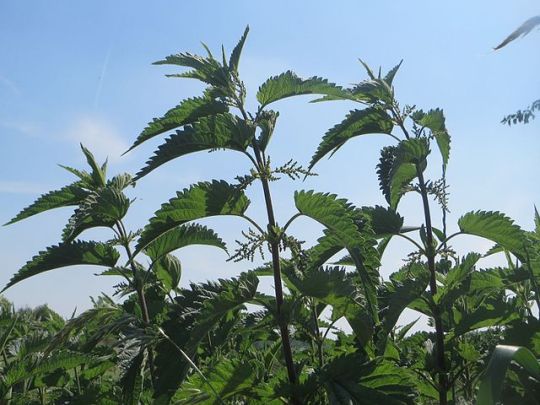
Stinging Nettle (Urtica dioica)
This is one of the most popular spring plants for foragers; chemicals that cause irritation can be removed through soaking the plants in water or cooking them. Although stinging nettle grows well in large areas of the United States, Mexico, and southern and western Canada, it is actually native to northern Africa, Europe, and Asia.
Stinging nettle makes itself at home in forested settings in particular. While it doesn’t create the same sorts of monocultures that, say, Himalayan blackberry does, it can shade out smaller plants with its broad leaves.
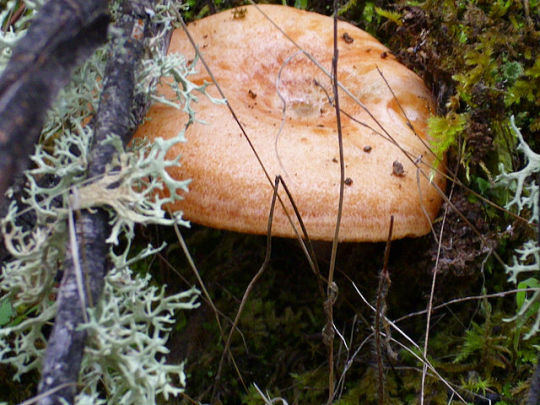
Saffron Milkcap (Lactarius deliciosus)
People don’t often think of fungi when it comes to non-native and invasive species, and yet there are fungi that have been moved around to new areas, often with their partner plants. Some are tiny soil fungi, but there are those that produce visible fruiting bodies. The edible saffron milkcap is one of these. It is mycorrhizal with pine trees in its native Europe, and managed to form connections with pines in North America as well.
As saffron milkcap does not cause any known diseases of plants, it is not considered an invasive species in the way that chestnut blight (Cryphonectria parasitica) is. While the mycelium of saffron milkcap may certainly compete for some of the same soil nutrients as native species in the same area, it has not become aggressive enough to displace native fungi.
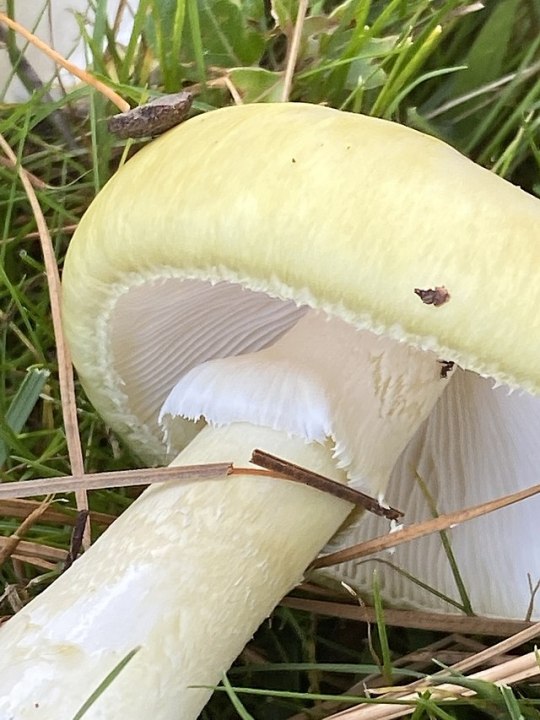
Death Cap (Amanita phalloides)
There are large, white Amanita species native to North America, like A. ocreata and A. bisporigera, both known colloquially as “destroying angels.” The death cap, however, is native to Europe. It has been spreading through parts of the United States, particularly along all the coastlines, and may sometimes be yellow-tinted. Its close cousin, the European destroying angel (A. virosa), has made a few appearances in New England and southern Quebec according to iNaturalist’s map of research-grade observations.
While these invasive Amanitas do not cause widespread ecological damage, they are considered invasive due to their extreme lethality. One cap is sufficient to kill a healthy adult human being.
Did you enjoy this post? Consider taking one of my online foraging and natural history classes or hiring me for a guided nature tour, checking out my other articles, or picking up a paperback or ebook I’ve written! You can even buy me a coffee here!
#CW spider#spider#animals#plants#fungi#wildlife#nature#invasive species#native species#biodiversity#ecology#conservation#environment#gardening#weeds#foraging#mushroom hunting
55 notes
·
View notes
Text
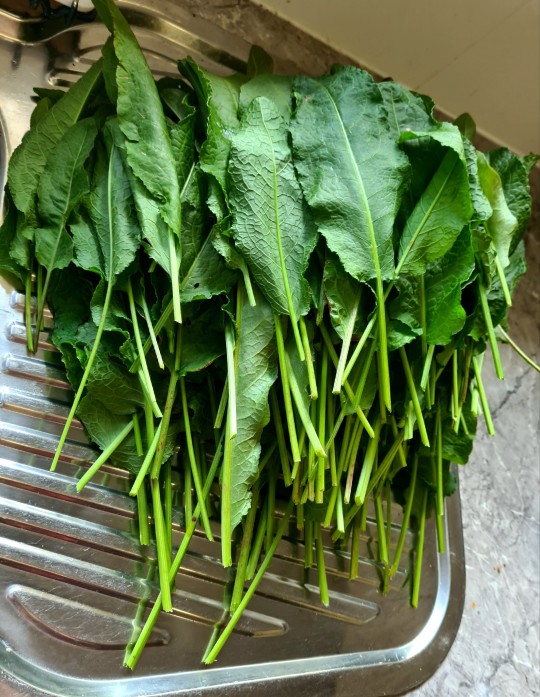
Today's foraging haul, a lot of dock weed from a nearby park 🌿
This once washed and processed filled three icecream containers which I freeze and use as needed.
Also a container of cut stems to pickle tomorrow if I can find the spoons.
5 notes
·
View notes